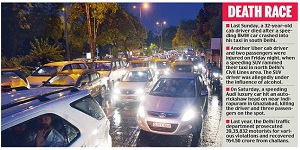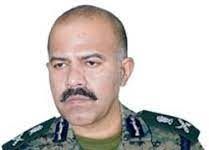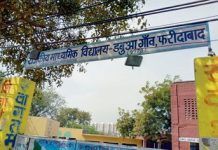Delhi traffic police is set to install high-definition CCTV cameras with night-vision facility on select stretches and traffic intersections in the national Capital to tighten their vigilance on the city’s speed demons during night hours. The decision comes close on the heels of three road accidents in the NCR in one week, each involving over-speeding luxury cars during late hours.
Five lives were lost in these accidents, causing public anger. ‘We have procured the cameras and the installations will be complete within a month,’ AK Ojha, Joint Commissioner of Police (Traffic) said.
‘We will not disclose the locations where these cameras will be fitted. The idea behind such a move is to create fear in the minds of motorists who think speeding rules can be violated during the night.’ Police officials said the cameras will be linked with such hi-tech tools that they will detect violation of speed limits, jumping of signals and automatically generate challans against the vehicle’s registered owner. ‘With the help of three digital cameras, telephone cables and database of city’s registered vehicles, a fully computerised system will be in place to take punitive action against violators,’ one of the senior officials involved in the exercise said.
The system consists of three small 360-degree PTZ (pan, tilt and zoom) cameras mounted on a pole at some distance from a traffic signal. The cameras are connected to traffic signals and three sensors placed below the surface just after the stop line. ‘The moment a vehicle jumps the signal, the cameras will start rolling.
‘All three cameras will take pictures of the violating vehicle from different angles. The wide range image will be used to identify the vehicle type, the mid-range for verification, and telephoto image to identify the registration number of the vehicle,’ the official said.
The images captured by these cameras will be transmitted via phone to the central office within two minutes. Police officials said the high-definition footage will also help them in building watertight cases against the culprits in fatal road accidents. The unit will have video storage capacities of one month and a dedicated control room to operate the digital equipment.
‘These cameras have capability of zoom in – zoom out and it would work even in night and foggy weather. It can detect traffic violators for particular violations and straight away recommend control room for challans,’ Ojha said. He pointed out that most accidents in Delhi-NCR take place during the night and morning hours in outer areas when motorists are less careful in following traffic rules.








